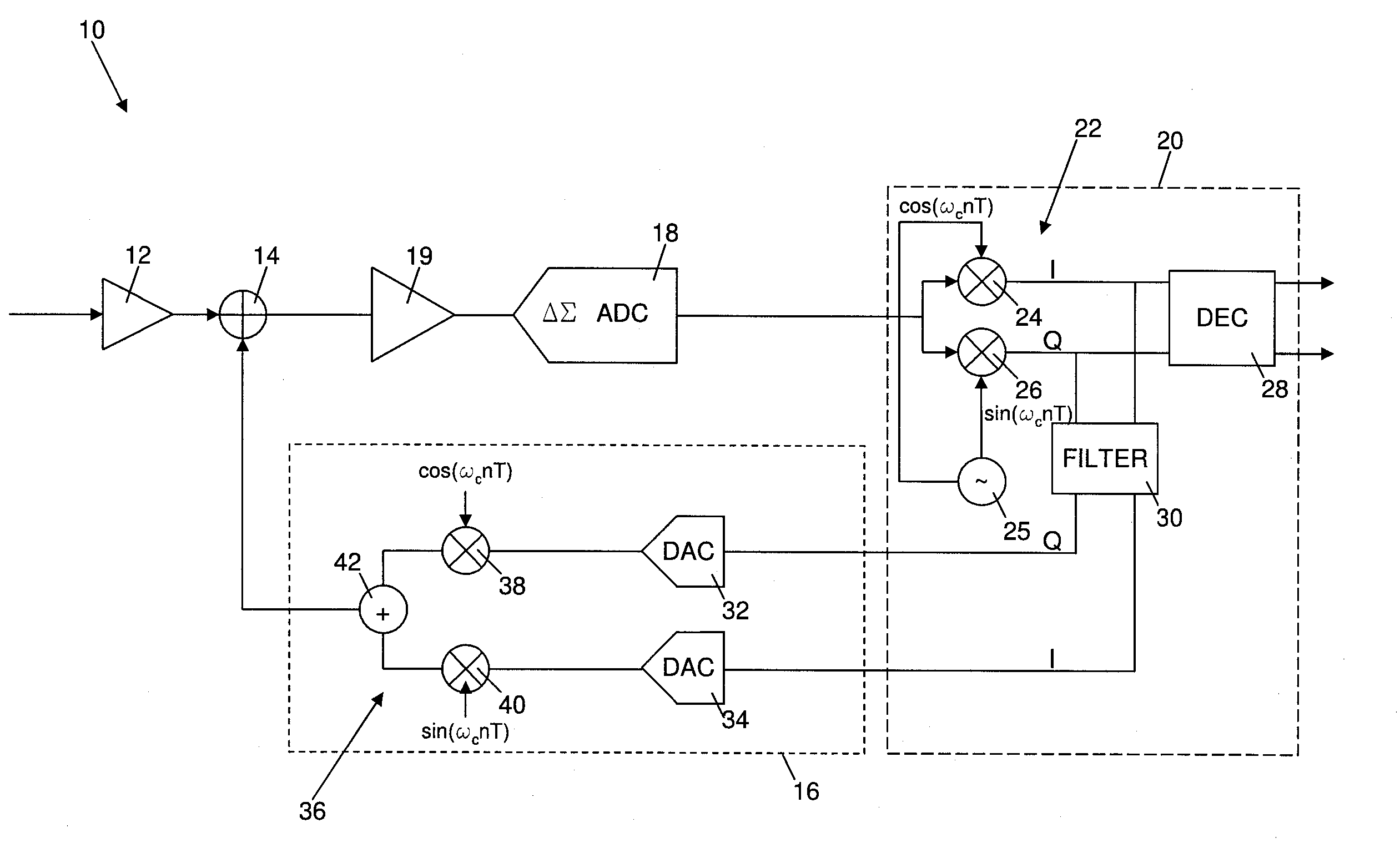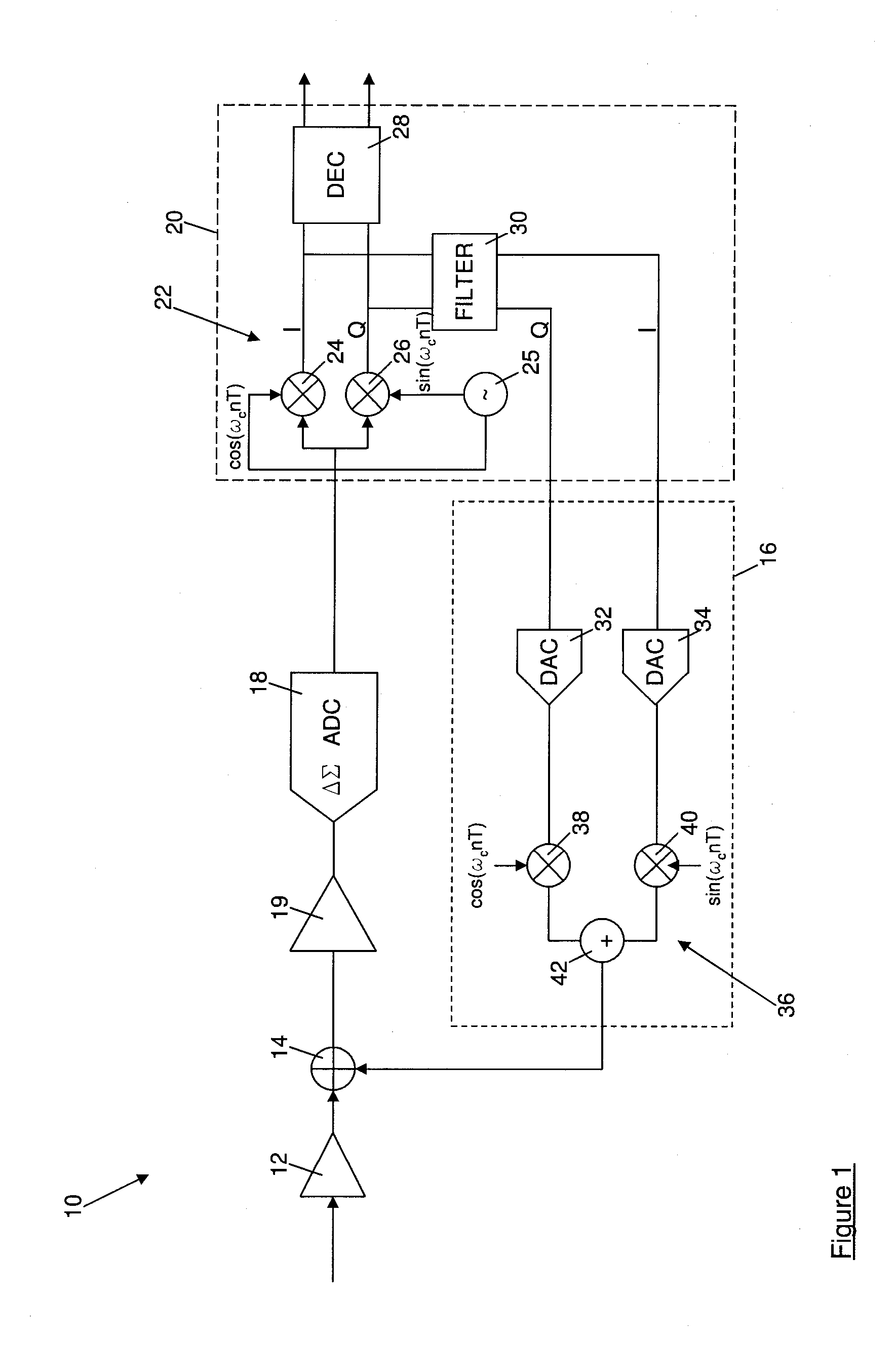Near field communications receiver
a receiver and near field technology, applied in the direction of near field transmission, transmission, electric devices, etc., can solve the problems of large silicon area, large amplitude of the carrier signal received by the nfc device, and large amplitude of the data signal, so as to simplify the design and implementation of the receiver and minimise timing errors.
- Summary
- Abstract
- Description
- Claims
- Application Information
AI Technical Summary
Benefits of technology
Problems solved by technology
Method used
Image
Examples
Embodiment Construction
[0030]FIG. 1 is a block diagram illustrating part of a receiver architecture for a near field communications (NFC) device. It is to be appreciated that the functional blocks shown in FIG. 1 do not necessarily represent components of a physical implementation of a receiver architecture, but instead represent functions that are performed by the receiver architecture. In practice, the receiver architecture may be implemented in many different ways, for example using discrete components or pre-fabricated circuit elements, using one or more appropriately programmed or configured digital signal processors (DSPs), field programmable gate arrays (FPGAs), application specific integrated circuits (ASICs) or general purpose processors.
[0031]The receiver is shown generally at 10 in FIG. 1, and includes a variable gain amplifier 12 which receives at its input a data modulated carrier signal received by an antenna of an NFC device incorporating the receiver architecture 10. The output of the vari...
PUM
 Login to View More
Login to View More Abstract
Description
Claims
Application Information
 Login to View More
Login to View More - R&D
- Intellectual Property
- Life Sciences
- Materials
- Tech Scout
- Unparalleled Data Quality
- Higher Quality Content
- 60% Fewer Hallucinations
Browse by: Latest US Patents, China's latest patents, Technical Efficacy Thesaurus, Application Domain, Technology Topic, Popular Technical Reports.
© 2025 PatSnap. All rights reserved.Legal|Privacy policy|Modern Slavery Act Transparency Statement|Sitemap|About US| Contact US: help@patsnap.com



